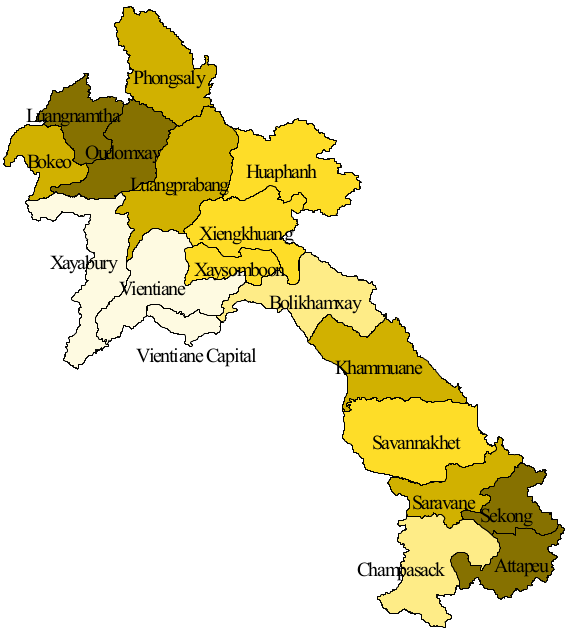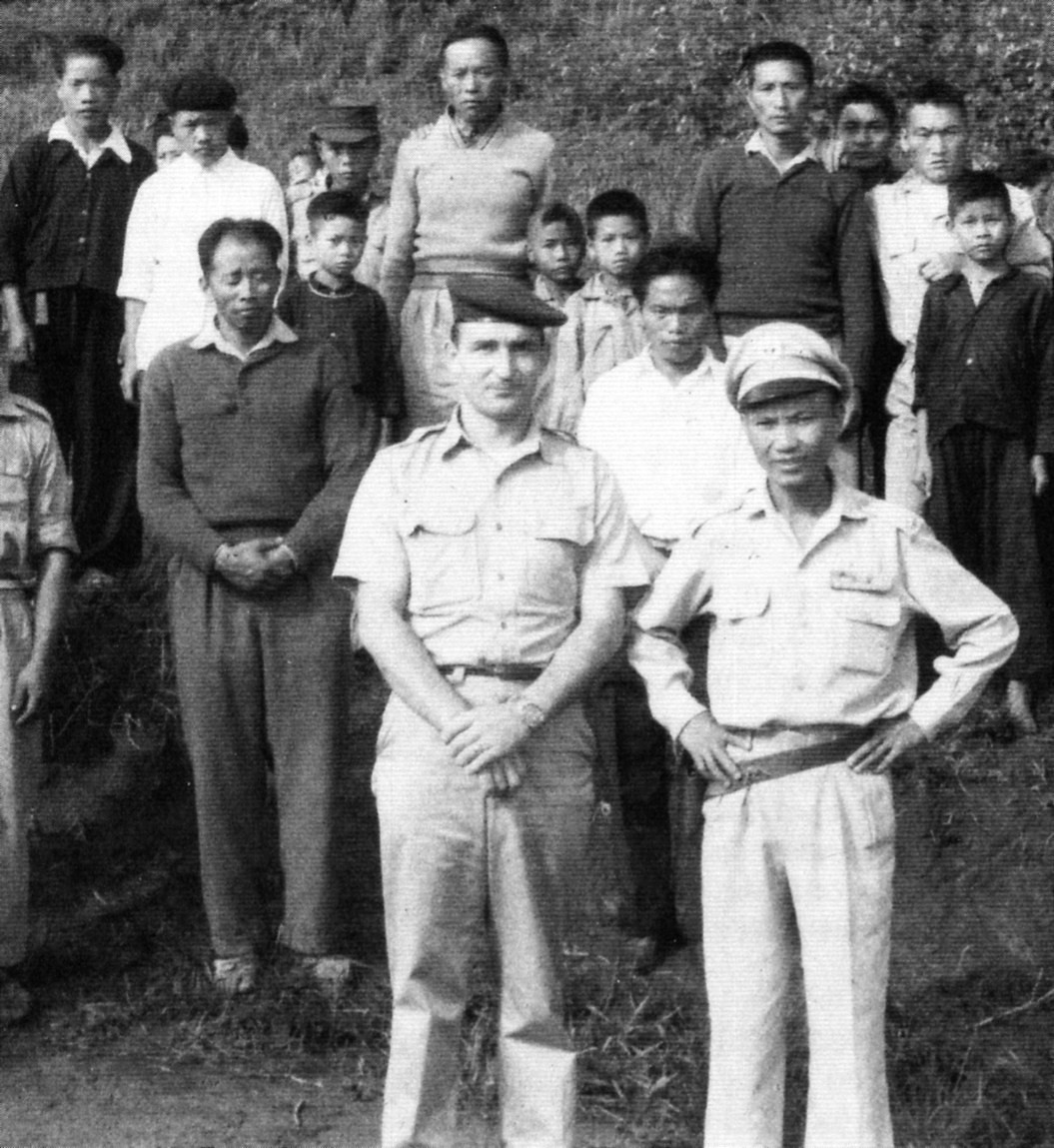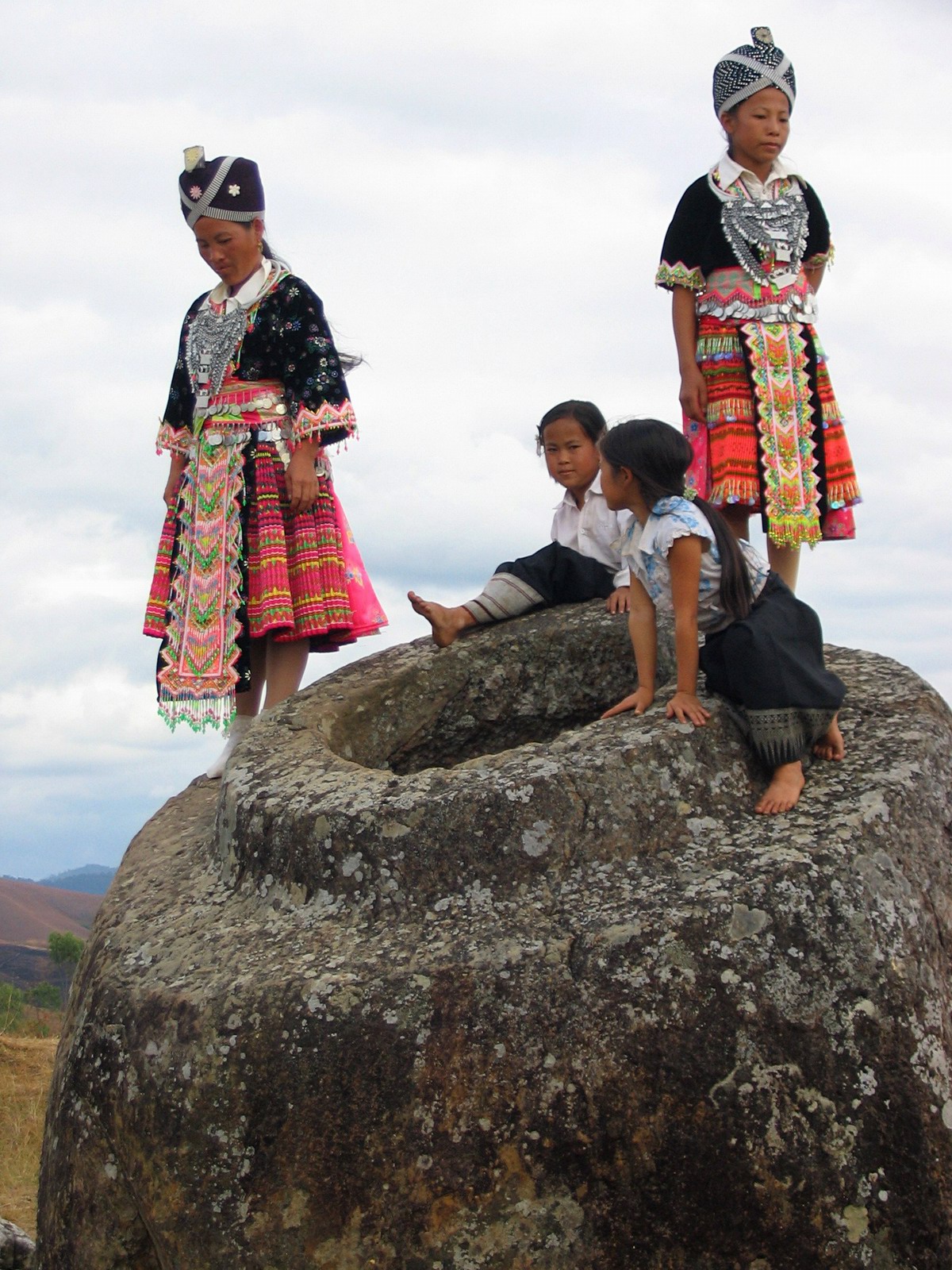|
Nong Haet
Nong Het, also Nong Haet, Nonghet, Muang Nonghet or Nonghed, is a market town in Xiangkhouang Province in northeastern Laos, located about from the border with Vietnam. It is the principal town of Nong Het District. It is located along Route 7, east of Phonsavan, along the road which passes through Muang Kham and Ban Na Sala on the way to Nong Haet. Bus companies operating in the area have increased to cater for tourists. The population is primarily Hmong peoples. History Nong Het has a turbulent history of battles between the Ly and Moua warriors, Red Laotians and the Hmong. The Red Laotians once invaded, tying up local leaders and robbing the wealthy of the town. Historically, two Hmong families have shared power in Nong Het, the Lo clan and the Ly clan. In 1917, the French appointed Lo Bliayao of the Lo clan as chief of Non Het. The strategical position of Nong Het meant that it was an "important resupply and transshipment point" during the Indochinese and Vietnam War, a ... [...More Info...] [...Related Items...] OR: [Wikipedia] [Google] [Baidu] |
Provinces Of Laos
Laos, officially the ''Lao People's Democratic Republic'', is divided into 17 provinces ( Lao ແຂວງ, , , or ) and one prefecture, the Vientiane capital city municipality (ນະຄອນຫຼວງ, nakhon louang, or ''Na Kone Luang Vientiane''). The special administrative zone (ເຂດພິເສດ, ''khet phiset''), Xaisomboun, created in 1994, was dissolved on 13 January 2006. In 2013, parts of the former special administrative zone was reestablished as Xaisomboun province. Provinces and prefectures of Laos Population The population of each province in 2015 is given in the census data. History In 1989 Vientiane prefecture was split from Vientiane province and the capital of Vientiane province moved from Vientiane to Muang Phôn-Hông. In 1994 Xaisômboun khetphiset (special region) was formed from parts of the Bolikhamxai, Vientiane, and Xiangkhoang provinces. In 2006 Xaisomboun special region was dissolved and the Longsan, Xaysomboun, Phun, and Hom dist ... [...More Info...] [...Related Items...] OR: [Wikipedia] [Google] [Baidu] |
Red Laotian
Red is the color at the long wavelength end of the visible spectrum of light, next to orange and opposite violet. It has a dominant wavelength of approximately 625–740 nanometres. It is a primary color in the RGB color model and a secondary color (made from magenta and yellow) in the CMYK color model, and is the complementary color of cyan. Reds range from the brilliant yellow-tinged scarlet and vermillion to bluish-red crimson, and vary in shade from the pale red pink to the dark red burgundy. Red pigment made from ochre was one of the first colors used in prehistoric art. The Ancient Egyptians and Mayans colored their faces red in ceremonies; Roman generals had their bodies colored red to celebrate victories. It was also an important color in China, where it was used to color early pottery and later the gates and walls of palaces. In the Renaissance, the brilliant red costumes for the nobility and wealthy were dyed with kermes and cochineal. The 19th century brought ... [...More Info...] [...Related Items...] OR: [Wikipedia] [Google] [Baidu] |
Vang Pao
Vang Pao ( RPA: ''Vaj Pov'' , Lao: ວັງປາວ; 8 December 1929 – 6 January 2011) was a major general in the Royal Lao Army. He was a leader of the Hmong American community in the United States. He was also known as General Vang Pao to the people in the Hmong community. Early life Vang, an ethnic Hmong, was born on 8 December 1929, in a Hmong village named Nonghet, located in Central Xiangkhuang Province, in the northeastern region of Laos, where his father, Neng Chu Vang, was a county leader. Vang began his early life as a farmer until Japanese forces invaded and occupied French Indochina in World War II. His father sent him away to school from the age of 10 to 15 before he launched his military career, joining the French Military to protect fellow Hmong during the Japanese invasion. While taking an entrance examination, the captain who was the proctor realized that Vang knew almost no written French. The captain dictated the answers to Vang so he could join ... [...More Info...] [...Related Items...] OR: [Wikipedia] [Google] [Baidu] |
Touby Lyfoung
Touby Lyfoung ( RPA: Tub Npis Lis Foom , Pahawh: : 1917–1979) was a Hmong political and military leader. Born in 1917 in Nong Het, Laos, he became the first Hmong politician to achieve national prominence. During his long career, which began under French colonial rule and extended to the communist takeover in 1975, he supported the Royal Lao Government and American involvement in the Secret War. Under French rule Touby Lyfoung was the son of Ly Xia Foung, a very well respected man among the Hmong community of Laos, and the grandson-in-law of Lo Bliayao, one of the first Hmong to gain leadership position in the Laotian government. Coming from a rich and well known family, Touby was able to attend schools in the lowlands of Laos and sent to study in Vietnam as well. Touby studied at the French Lycée, School of Law, and the Administration in Vientiane. The French were impressed by his education, for he was the only Hmong to have attained such an education in the French col ... [...More Info...] [...Related Items...] OR: [Wikipedia] [Google] [Baidu] |
People's Army Of Vietnam
The People's Army of Vietnam (PAVN; vi, Quân đội nhân dân Việt Nam, QĐNDVN), also recognized as the Vietnam People's Army (VPA) or the Vietnamese Army (), is the military force of the Vietnam, Socialist Republic of Vietnam and the armed wing of the ruling Communist Party of Vietnam. The PAVN is a part of the Vietnam People's Armed Forces and includes: Ground Force, Vietnam People's Navy, Navy, Vietnam People's Air Force, Air Force, Vietnam Border Guard, Border Guard and Vietnam Coast Guard, Coast Guard. However, Vietnam does not have a separate Ground Force or Army branch. All ground troops, army corps, military districts and specialised arms belong to the Ministry of Defence (Vietnam), Ministry of Defence, directly under the command of the Central Military Commission (Vietnam), Central Military Commission, the Minister of Defence (Vietnam), Minister of Defence, and the General Staff of the Vietnam People's Army. The military flag of the PAVN is the flag of the Socia ... [...More Info...] [...Related Items...] OR: [Wikipedia] [Google] [Baidu] |
Vietnam War
The Vietnam War (also known by #Names, other names) was a conflict in Vietnam, Laos, and Cambodia from 1 November 1955 to the fall of Saigon on 30 April 1975. It was the second of the Indochina Wars and was officially fought between North Vietnam and South Vietnam. The north was supported by the Soviet Union, China, and other communist states, while the south was United States in the Vietnam War, supported by the United States and other anti-communism, anti-communist Free World Military Forces, allies. The war is widely considered to be a Cold War-era proxy war. It lasted almost 20 years, with direct U.S. involvement ending in 1973. The conflict also spilled over into neighboring states, exacerbating the Laotian Civil War and the Cambodian Civil War, which ended with all three countries becoming communist states by 1975. After the French 1954 Geneva Conference, military withdrawal from Indochina in 1954 – following their defeat in the First Indochina War – the Viet Minh to ... [...More Info...] [...Related Items...] OR: [Wikipedia] [Google] [Baidu] |
Lo Bliayao
Lo may refer to any of the following: Arts and entertainment * ''Lo!'', the third published nonfiction work of the author Charles Fort * L.O., a fictional character in the Playhouse Disney show Happy Monster Band * ''Lo'' (film), a 2009 independent film * Lo Recordings, a London-based record company established in 1995 * ''Law & Order'' (franchise), several related American television series created by Dick Wolf * '' Lost Odyssey'', a 2007 role-playing video game * '' Lore Olympus'', a 2018 webcomic ** ''Lore Olympus'' (TV series), an in-development adaptation by The Jim Henson Company Businesses and organizations * Legal observer, a third-party organization that monitors protests or war zones in the interest of protecting human and civil rights * Lo Recordings, a London-based record company established in 1995 * "National confederation of trade unions" in several Scandinavian countries: ** ''Landsorganisationen i Danmark'' (Danish Confederation of Trade Unions) ** ''Landsor ... [...More Info...] [...Related Items...] OR: [Wikipedia] [Google] [Baidu] |
Hmong People
The Hmong people ( RPA: ''Hmoob'', Nyiakeng Puachue: , Pahawh Hmong: , ) are a sub-ethnic group of the Miao people who originated from Central China. The modern Hmongs presently reside mainly in Southwest China (Guizhou, Yunnan, Sichuan, Chongqing, and Guangxi) and countries in Southeast Asia such as Vietnam, Laos, Thailand, and Myanmar. There is also a very large diasporic community in the United States, comprising more than 300,000 Hmong. The Hmong diaspora also has smaller communities in Australia and South America (specifically Argentina and French Guiana, the latter being an overseas region of France). During the First and Second Indo-China Wars, France and the United States intervened in the Lao Civil War by recruiting thousands of Hmong people to fight against forces from North and South Vietnam, which were stationed in Laos in accordance with their mission to support the communist Pathet Lao insurgents. The CIA operation is known as the Secret War. Etymol ... [...More Info...] [...Related Items...] OR: [Wikipedia] [Google] [Baidu] |
Xiangkhouang Province
Xiangkhouang ( Lao: ຊຽງຂວາງ, meaning 'Horizontal City') is a province of Laos on the Xiangkhoang Plateau, in the nation's northeast. The province has the distinction of being the most heavily bombed place on Earth. The province was originally known as the Principality of ''Muang Phuan'' (Muang Phouan / Xieng Khouang). Its present capital is Phonsavan. The population of the province as of the 2015 census was 244,684. Xiangkhouang province covers an area of and is mountainous. Apart from floodplains, the largest area of level land in the country is on the province's Xiangkhoang Plateau. The plateau is characterized by rolling hills and grassland whose elevation averages . The country's highest peak, Phou Bia (), rises at the south side of the plateau. Nam Et-Phou Louey is a National Biodiversity Conservation Area (NBCA) in the province, covering an area of 5,959 km2, and overlaps into Houaphanh and Luang Prabang provinces. The province's Plain of Jars was ... [...More Info...] [...Related Items...] OR: [Wikipedia] [Google] [Baidu] |






